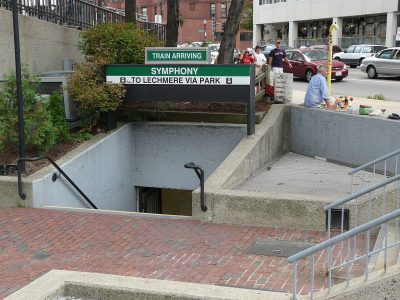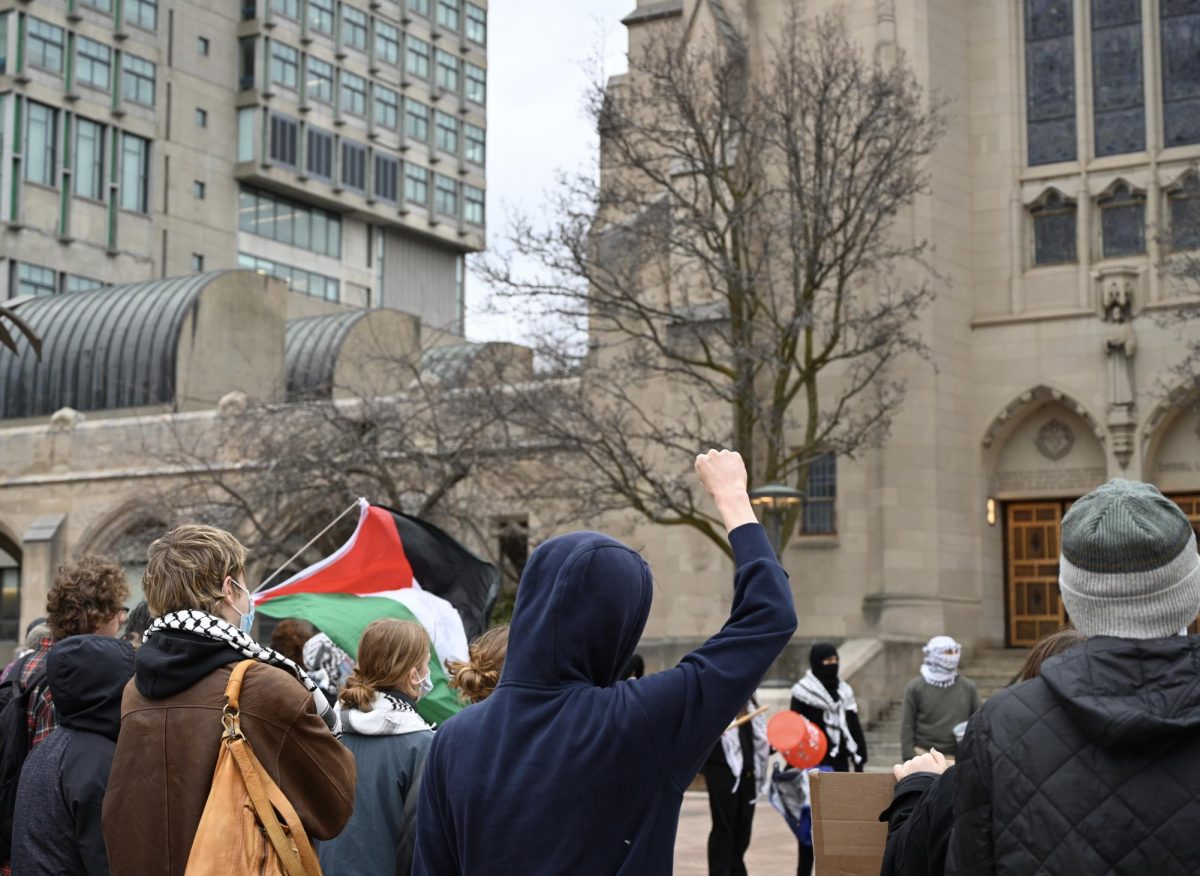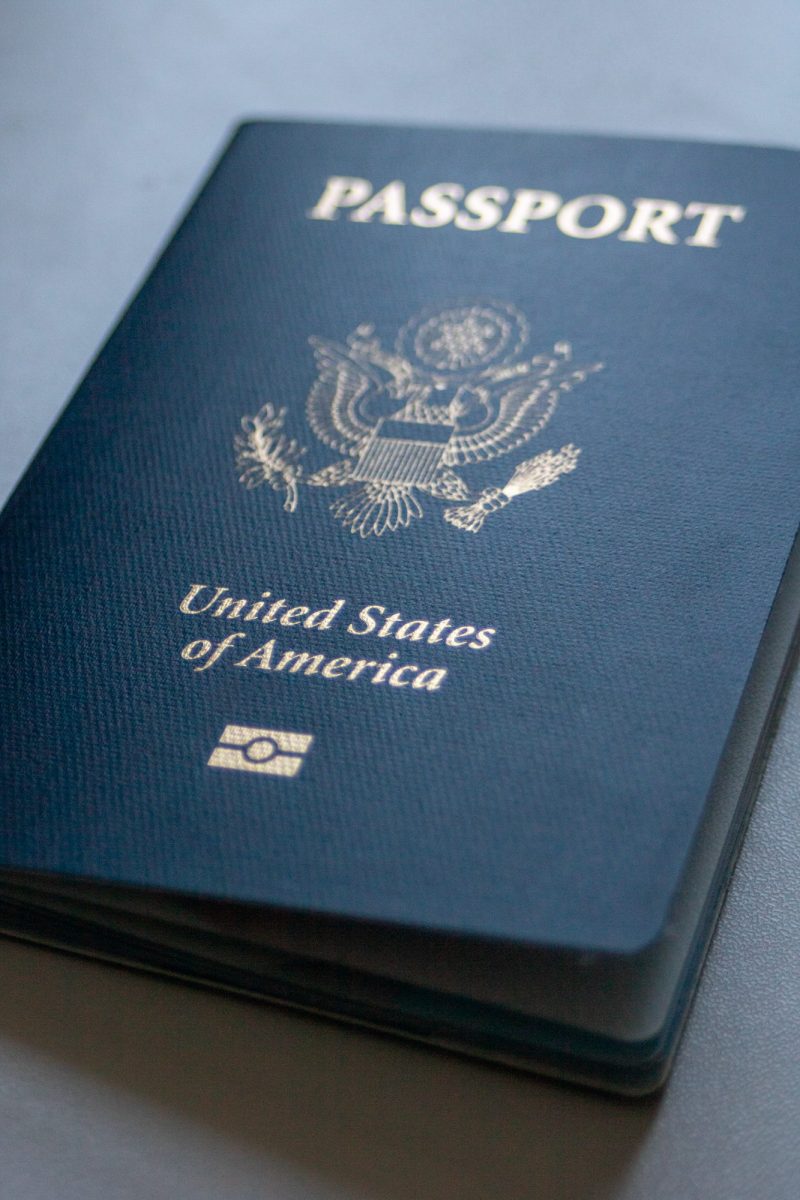The MBTA is renovating its Symphony Station Green Line stop with improvements in accessibility and safety for those with physical and cognitive disabilities — part of a larger initiative to increase accessibility and reliability linewide.

Members of Green Line Transformation shared details of the station’s design at a virtual community meeting Wednesday, as the Symphony Station Accessibility Improvements project enters its final design phase.
The station will gain four street-level elevators and have its platforms raised by eight inches for level-train boarding, making the station more wheelchair-accessible.
Other renovations include a set of high-contrast stairs for the visually-impaired, two accessible public restrooms and four areas of refuge.
“The Symphony Station Accessibility Improvements project … will not only improve accessibility and safety for all riders but will also improve the overall quality of service for the Green Line,” Angel Peña, chief of GLT, said during the meeting.
The Green Line Transformation is a five-year project, started in 2018, that focuses on increasing accessibility, capacity and safety along the rails.
The MBTA’s improvements are welcomed by many residents with disabilities who rely on public transit and their advocates.
“As a blind person, I don’t have a car,” said Joe Quintanilla, vice president of development and major gifts at the National Braille Press. “I don’t have the option to have a car. So, to be able to get around with public transportation or paratransit allows me to be able to get to work, do my grocery shopping, do daily errands.”
Quintanilla said individuals with disabilities are often considered last — or not at all — in discussions of diversity and inclusion.
Rep. David Vieira, R-Mass., who is also legally blind, asked the members of the transformation team to include backlit panels in the elevators.
“Sometimes, it’s very hard to discern where the panel is,” he said. “Pinhole buttons really don’t work as well as a nice, bright button.”
Another concern raised at the meeting was that snow would become a barrier for accessibility. Residents argued that stations becoming inaccessible during the winter causes some wheelchair users to avoid the train.
Members of the committee responded that the MBTA and the City of Boston will work together to ensure all pathways and elevators are clear of snow.
The MBTA has been increasing accessibility in its services since 2006, after a class-action lawsuit settlement brought on by 11 riders, along with the Boston Center for Independent Living, pushed the MBTA to provide greater accessibility.
The suit, Joanne Daniels-Finegold, et al. v. MBTA, took four years to reach a settlement. The plaintiffs did not ask for monetary compensation as part of the lawsuit — any financial reward would have gone to T renovations.
Joanne Daniels-Finegold, one of the plaintiffs and the name on the suit, said the culture of the MBTA in the early 2000s was one of the biggest hurdles in bringing about change.
“There were people who wanted to believe that they were doing everything they could,” she said. “Then, there were others that had felt that we were the enemy.”
Jessica Podesva, community organizer at the BCIL, said transportation access is a key barrier to independent living, so she is happy to see the changes at Symphony Station.
Currently, the MBTA reports that the Symphony Station stop, an underground platform, has “significant accessibility barriers.”
But Daniels-Finegold said the changes are “long overdue” in the neighborhood, which includes the Susan S. Bailis Assisted Living facility and Northeastern University, in addition to Symphony Hall.
Quintanilla said it seems as though the MBTA’s improvements and development progress are based on population density rather than the pursuit of universal change.
“They should be thinking about, ‘Let’s make it available to everybody right out of the box, because it’s the right thing to do,’” he said.
Daniels-Finegold said there are three key areas where the MBTA needs to improve: communication, anticipating needs and wayfinding.
She said the MBTA is “not all that great” at communicating with the disabled community and public at large, adding that the service should adopt a public service announcement system.
Leo Sarkissian, the executive director of disability advocacy group The Arc of Massachusetts, said accessibility issues on the MBTA come down to a combination of funding and culture — Symphony Station’s construction is projected to cost the MBTA at least $30.7 million.
“The MBTA is reflective of a lot of our society’s generic resources,” Sarkissian said, “that have good periods and periods that are not so.”
He said he hopes that accessibility efforts continue and expand in scope moving forward — adding the federal government should play a part in the effort.
“There are opportunities, but it would require investment,” Sarkissian said. “It requires making a commitment financially, as a state and as a country.”
Jarred Johnson, executive director of TransitMatters, wrote in an email that while the work being done on the Green Line, bus and commuter rail is exciting, the program needs to accelerate.
Johnson added one of the most pressing issues was accessibility in buses, which account for nearly half the MBTA’s ridership.
“Too many bus stops are poorly marked, lack shade or seating, or worse, are worn, uneven patches of dirt on the side of the road,” Johnson wrote. “Bus riders deserve dignity while waiting regardless of disability status.”
Quintanilla said equity should be an initial consideration among MBTA planners, not a later solution.
“Think about people with disabilities from the beginning,” Quintanilla said. “If you figured out how to make it work for people with disabilities from the beginning, everybody would be better off.”























































































































